Plenary Speakers
Associate Professor Geraldine Mitchell, St Vincent’s Institute of Medical Research, Australia
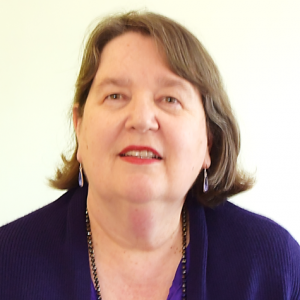 Geraldine Mitchell is Leader of the Vascular Biology Group at the O’Brien Institute Dept. of St Vincent’s Institute of Medical Research, Melbourne.
Geraldine Mitchell is Leader of the Vascular Biology Group at the O’Brien Institute Dept. of St Vincent’s Institute of Medical Research, Melbourne.
For 15 years she has been involved in research projects investigating in vitro and in vivo blood vessel tissue engineering including vascularizing 3D scaffold constructs, organoids and animal models, wound healing angiogenesis, and implanted cell survival in in vivo tissue engineering models.
In recent work, her group has examined in vitro formation of human capillary networks using primary human blood microvascular endothelial cells, primary human lymphatic endothelial cells and human induced pluripotent stem cell (hiPSC)-derived endothelial cells. Each of these endothelial cell types has been seeded into a porous polyurethane scaffold and capillary formation assessed. In vivo, the scaffolds containing the capillary networks have been transplanted into subdermal positions; and over vascular pedicles in mice and rats to form a ‘vascular flap’. Her group is also forming skin from hiPSC to use as a covering over the vascular flap and thereby assembling a human skin tissue flap for wound repair.
Dr Daniel Pletzer, University of Otago, New Zealand
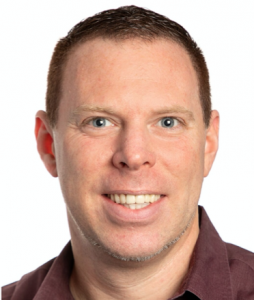
Dr. Daniel Pletzer is a Senior Lecturer at the University of Otago. He did his PhD at the Jacobs University Bremen in Germany where he studied mechanisms to improve antibiotic uptake in the human pathogen Pseudomonas aeruginosa. He was awarded one of Germany’s most prestigious Feodor-Lynen Postdoctoral Fellowships from the Alexander von Humboldt Foundation and joined the lab of world-renowned Prof. Bob Hancock at the University of British Columbia in Canada. His postdoctoral research focused on novel therapeutics, based on host defense peptides, and the use of animal models of disease. Dr. Pletzer started his lab in the Microbiology & Immunology Department at the University of Otago in 2019 where his team study new ways to fight infectious diseases and searches for strategies to overcome antimicrobial resistance in bacteria that have been categorized as “critical” priority pathogens by the World Health Organization. This includes multidrug resistant organisms that cause severe and often deadly infections and therefore pose an enormous threat in our hospitals. He is particularly interested in hard-to-treat clinical isolates involved in multidrug resistance and chronic infections associated with bacterial communities known as biofilms. Using a chronic murine skin abscess model, his lab is uncovering mechanisms of how multiple pathogens, especially P. aeruginosa and Staphylococcus aureus, cause disease and how to better treat co-infections using a variety of novel nanomedicines including peptidomimetics and nanoparticles. Dr. Pletzer has published over 60 manuscripts and review articles and won several other early career awards including awards from the Cystic Fibrosis Canada Foundation and the Michael Smith Foundation for Health Research (Canada).
Dr Leah Vardy, Agency for Science, Technology and Research, Singapore
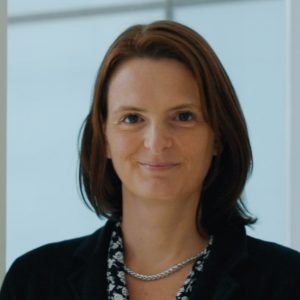
Leah Vardy is the Covering Executive Director of the A*STAR Skin Research Labs (A*SRL) and the Director of Research Operations at the Skin Research Institute of Singapore (SRIS). Leah did her Ph.D at the Imperial Cancer Research Fund in London followed by post doctoral work at the Whitehead Institute in Cambridge, in the US. In 2007 she joined A*STAR’s Institute of Medical Biology to study stem cell differentiation. In 2018 she transitioned to A*STAR’s Skin Research Institute of Singapore and then to A*STAR’s Skin Research Labs where her lab focuses on understanding how the behavior of cells within human skin is controlled and how this is affected in the context of aging and disease. Her recent work has uncovered new roles for a family of metabolites called polyamines in controlling cellular behavior during wound healing and tissue repair. Research in the Vardy lab is focused on understanding the biology behind skin pathologies, including tissue repair, with the goal of developing new treatments and diagnostics for clinical application.
Professor Anthony (Tony) Weiss AM PhD FTSE FRSN FRSC FRACI CChem FAIMBE FNAI FBSE FTERM, University of Sydney, Australia
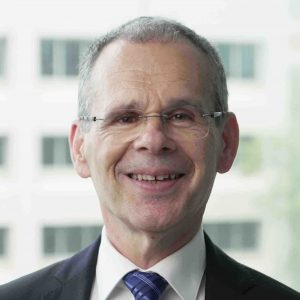 Professor Weiss is the McCaughey Chair in Biochemistry, NHMRC Senior Leadership Fellow, and Professor of Biochemistry & Molecular Biotechnology. He leads Tissue Engineering & Regenerative Medicine in the Charles Perkins Centre at the University of Sydney.
Professor Weiss is the McCaughey Chair in Biochemistry, NHMRC Senior Leadership Fellow, and Professor of Biochemistry & Molecular Biotechnology. He leads Tissue Engineering & Regenerative Medicine in the Charles Perkins Centre at the University of Sydney.
Awards include Prime Minister’s Prize for Innovation, Premier’s Prize for Science & Engineering Leadership in Innovation, Australian Academy of Technology & Engineering’s Clunies Ross Medal, Eureka Prize for Innovation in Medical Research, Royal Australian Chemical Institute Weickhardt Medal, Royal Australian Chemical Institute Applied Research Medal, Vice Chancellor’s Award for Excellence, Australasian Society for Biomaterials & Tissue Engineering’s Award for Research Excellence, Innovator of Influence Award, NIH Fogarty International Fellow, Fulbright Scholar, and the Order of Australia.
He founded the clinical stage company Elastagen Pty Ltd which was spun off from the University of Sydney to commercialise tropoelastin. Benefitting from a remarkable executive and board, Elastagen was acquired by AbbVie, one of the top biopharmaceutical companies, in one of the largest transactions completed in the Australian life science sector.
Invited Speakers
Associate Professor Christina Bursill, South Australian Health and Medical Research Institute, Australia
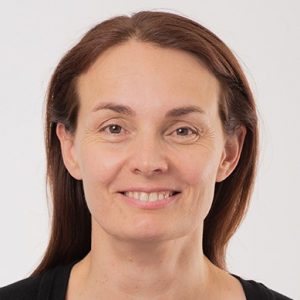
A/Prof Christina Bursill (BSc (Hons 1) PhD, Adelaide University; Postdoc, Oxford University, UK) is a leader in cardiovascular biology, with a national and emerging international profile for her expertise in the biology and mechanisms of atherosclerotic plaques and mechanisms of diabetes-impaired angiogenesis and wound healing. After a six-year postdoc at The University of Oxford, she returned to Australia to lead the Immunobiology Group at the Heart Research Institute as part of a National Heart Foundation Career Development Fellowship. In 2017 A/Prof Bursill moved to Adelaide where she is Co-director of the Vascular Research Centre at South Australian Health and Medical Research Institute (SAHMRI) and a National Heart Foundation (NHF) Lin Huddleston fellow. A/Prof Bursill is Chief Investigator on the Australian Research Council, Centre of Nanoscale Biophotonics (CNBP), a $23 million grant, where she leads the “Inside blood vessels theme”. As CIA she has received >$2 million in competitive research funding in the last 3 years including NHMRC Ideas, Diabetes Australia Millennium and National Heart Foundation Vanguard grants. A/Prof Bursill has published >95 papers, supervised >15 PhD students to completion and currently leads a research team of six people. A/Prof Bursill is a board member for the Australian Cardiovascular Alliance (ACvA), the International Atherosclerosis Society and is past-President of the Australian Atherosclerosis Society (AAS, 2017-2019).
Dr Joanneke Maitz, ANZAC Research Institute Concord Hospital, Australia
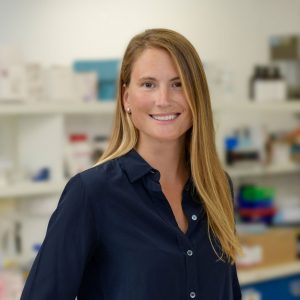 Dr. Joanneke Maitz is a clinician in plastic and reconstructive surgery and early career researcher in translational burn injury and reconstructive surgery. Dr. Maitz achieved a Master of Science (Medicine) at the Vrije University of Amsterdam with an M.D. thesis in burn injury wound care management using nanotechnology. Throughout Dr. Maitz’s clinical career, Dr. Maitz has maintained a close working relationship between clinical work and research roles whilst undertaking regular complex tissue reconstruction surgeries including breast reconstruction after cancer using advanced microsurgical and bio-engineering principles at Chris O’Brien Lifehouse and other health care facilities. Dr. Maitz achieved a Master of Philosophy (Surgery) in skin tissue engineering at the University of Sydney in 2019 and is the group lead of the Burn Injury and Reconstructive Surgery Research Team at the ANZAC Research Institute at Concord Repatriation General Hospital. Complementary to her clinical and research roles, Dr Maitz is the Medical Director of Tetratherix Pty. Ltd., an Australian biotech company developing novel biomedically engineered solutions for soft tissue regeneration. Dr Maitz’s focus in translational research of clinical and laboratory-based research of bioengineering in burns and reconstructive surgery, is aimed at bridging clinical, scientific and commercial fields.
Dr. Joanneke Maitz is a clinician in plastic and reconstructive surgery and early career researcher in translational burn injury and reconstructive surgery. Dr. Maitz achieved a Master of Science (Medicine) at the Vrije University of Amsterdam with an M.D. thesis in burn injury wound care management using nanotechnology. Throughout Dr. Maitz’s clinical career, Dr. Maitz has maintained a close working relationship between clinical work and research roles whilst undertaking regular complex tissue reconstruction surgeries including breast reconstruction after cancer using advanced microsurgical and bio-engineering principles at Chris O’Brien Lifehouse and other health care facilities. Dr. Maitz achieved a Master of Philosophy (Surgery) in skin tissue engineering at the University of Sydney in 2019 and is the group lead of the Burn Injury and Reconstructive Surgery Research Team at the ANZAC Research Institute at Concord Repatriation General Hospital. Complementary to her clinical and research roles, Dr Maitz is the Medical Director of Tetratherix Pty. Ltd., an Australian biotech company developing novel biomedically engineered solutions for soft tissue regeneration. Dr Maitz’s focus in translational research of clinical and laboratory-based research of bioengineering in burns and reconstructive surgery, is aimed at bridging clinical, scientific and commercial fields.
Dr Rachael Moses, University of Melbourne, Australia
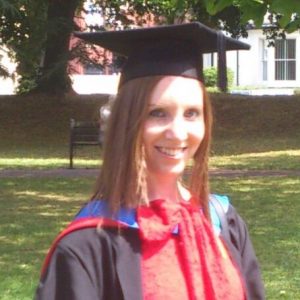
Dr Rachael Moses took up the position of Research Associate at the University of Melbourne in 2021 with Professor Alastair Sloan, where she heads up the lab in the Sloan/Moses group. Rae’s interests lie in natural compound pharmaceuticals for wound healing, in particular for chronic, non-healing wounds. Additionally, she has an interest in the 3Rs (reduction, replacement, refinement), focusing on developing a 3D organotypic chronic wound model for the assessment of novel wound healing therapies. She obtained her PhD at Cardiff University, in the UK, in the field of Tissue Engineering. Continuing from her PhD studies, Rae undertook postdoctoral research focusing on the elucidation of the underlying mechanisms of action by which novel epoxy-tigliane pharmaceuticals promote preferential wound healing responses, in collaboration with QBiotics Group and QIMR Berghofer, based in Australia. This research resulted in being included as an inventor on a worldwide patent for ‘Methods and Compositions for Wound Healing’, relating to the application of epoxy-tigliane compounds in the promotion of dermal wound healing and reduced scarring.
Associate Professor Jelena Rnjak-Kovacina, UNSW Sydney, Australia
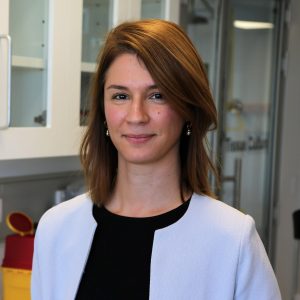 Dr Jelena Rnjak-Kovacina is an Associate Professor and ARC Future Fellow leading a multidisciplinary group at the Graduate School of Biomedical Engineering, UNSW Sydney in Australia.
Dr Jelena Rnjak-Kovacina is an Associate Professor and ARC Future Fellow leading a multidisciplinary group at the Graduate School of Biomedical Engineering, UNSW Sydney in Australia.
Her research interests are at the interface of biology and engineering, focusing on the development of biomimetic materials that direct cellular interactions for enhanced vascularisation and for the treatment of cardiovascular disease. In particular, she develops novel silk-based biomaterials and investigates how biomaterial properties translate to biological outcomes.
She completed her doctoral degree in Anthony Weiss’ lab at the University of Sydney and her postdoctoral training in David Kaplan’s group at Tufts University in Boston. She joined UNSW in 2014 where her research has been supported by funding from the Australian Research Council, the National Heart Foundation, the National Health & Medical Research Council and NSW Health. She is the recipient of multiple awards, including most recently the NSW Ministerial Award for Rising Stars in Cardiovascular Research and the Early Career Researcher of the Year (Physical Sciences) in the NSW Premier’s Prizes for Science & Engineering.
She is actively involved in the Australasian MedTech sector, including as Treasurer and Secretary of the Australasian Society for Biomaterials & Tissue Engineering (ASBTE) and board member of the Australian Cardiovascular Alliance (ACvA) Bioengineering flagship. She is passionate about research training and communication.
Dr Abbas Shafiee, University of Queensland, Australia
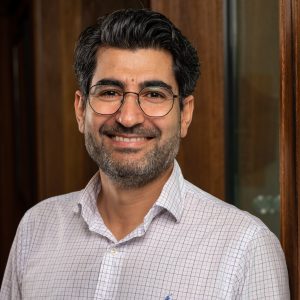 Dr Abbas Shafiee is a Senior Research Fellow at the Herston Biofabrication Institute (The Royal Brisbane and Women’s Hospital, MNHHS), and The University of Queensland. He has a demonstrated high performing research trajectory in the Regenerative Medicine and Bioengineering arena. His research impact has been demonstrated with 67 research papers in high standing, and high impact factor journals, including but not limited to Biomaterials, The Journal of Heart and Lung Transplantation, Bone Research, Stem Cells Translational Medicine, and Small.
Dr Abbas Shafiee is a Senior Research Fellow at the Herston Biofabrication Institute (The Royal Brisbane and Women’s Hospital, MNHHS), and The University of Queensland. He has a demonstrated high performing research trajectory in the Regenerative Medicine and Bioengineering arena. His research impact has been demonstrated with 67 research papers in high standing, and high impact factor journals, including but not limited to Biomaterials, The Journal of Heart and Lung Transplantation, Bone Research, Stem Cells Translational Medicine, and Small.
In 2020, Dr Shafiee started a clinical research program to develop, implement, and evaluate the applications of 3D printing, stem cell therapies, and biofabrication technologies in burn patients. Using 3D printing and stem/progenitor cell delivery, he could develop new dressing to enhances physiological wound closure with reduced scarring. He is also part of a national program aiming to develop 3D bioprinting technology to treat skin wounds. Additionally, Dr Shafiee’s team has found new ways of generating skin organoids from human pluripotent stem cells. Reconstructing the appendage-bearing skin organoids in cultures could change the way skin diseases and wounds are studied and treated.
Dr Shafiee’s authority in the field has been acknowledged by invitations to serve as Guest Editor or on the Editorial Board of leading scientific journals. He is also passionate about training the next scientific generation and healthcare professionals, and has trained several PhD, MSc, MD, and undergraduate students.
Dr Andrew Stevenson, University of Western Australia
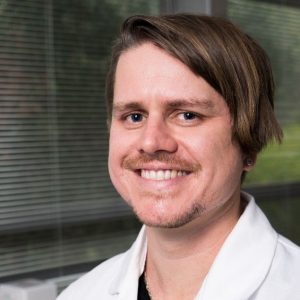 Dr. Andrew Stevenson is a Postdoc based at the Burn Injury Research Unit at the University of Western Australia, where he has a broad focus on burn injury and a specific interest in fibroblast biology. Completing his PhD on the epigenetics of scar fibroblasts in 2016, he has been involved in a multitude of projects based on reducing fibrosis and encouraging skin regeneration, including single cell RNA sequencing of keloid scar, developing a topical lysl-oxidase based inhibitor to treat scarring (now in phase II clinical trial), and more recently, in vivo 3D bioprinting. He has a keen interest in all forms of regenerative biology, as well as driving unique applications of new technology to existing problems in the field of wound healing and scarring, and was named AWTRS early to mid-career researcher of the year in 2021.
Dr. Andrew Stevenson is a Postdoc based at the Burn Injury Research Unit at the University of Western Australia, where he has a broad focus on burn injury and a specific interest in fibroblast biology. Completing his PhD on the epigenetics of scar fibroblasts in 2016, he has been involved in a multitude of projects based on reducing fibrosis and encouraging skin regeneration, including single cell RNA sequencing of keloid scar, developing a topical lysl-oxidase based inhibitor to treat scarring (now in phase II clinical trial), and more recently, in vivo 3D bioprinting. He has a keen interest in all forms of regenerative biology, as well as driving unique applications of new technology to existing problems in the field of wound healing and scarring, and was named AWTRS early to mid-career researcher of the year in 2021.
Dr Peta Tehan, Monash University, Australia
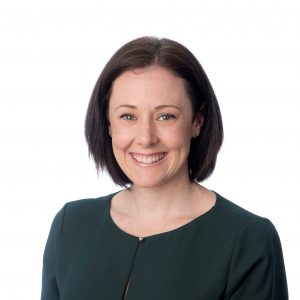 Dr Tehan is a clinical podiatrist and researcher with a special interest in peripheral arterial disease. Dr Tehan has contributed to the evidence base significantly, publishing over 30 peer reviewed articles in the field. This research has influenced clinical practice, and national and international guidelines. It is Dr Tehans hope that the early and accurate detection of peripheral arterial disease can result in optimal management, which will in turn, result in fewer lower limb amputations and deaths. Dr Tehan is currently working as a lecturer int he Masters of Wound Care program at Monash University, Australia, and also works clinically at a high risk foot service at the John Hunter Hospital in Newcastle, Australia. Dr Tehan also holds an honorary appointment as a senior lecturer in the Podiatry program at the University of Newcastle, Australia. Dr Tehan is the chair of the Wounds Australia research committee, a trustee of the Australian Podiatry Education Research Fund, and an editorial board member of Vascular Medicine, and the Journal of Foot and Ankle Research. Dr Tehan is currently focused on closing the gap in diabetic foot disease related outcomes between rural and metropolitan areas of Australia.
Dr Tehan is a clinical podiatrist and researcher with a special interest in peripheral arterial disease. Dr Tehan has contributed to the evidence base significantly, publishing over 30 peer reviewed articles in the field. This research has influenced clinical practice, and national and international guidelines. It is Dr Tehans hope that the early and accurate detection of peripheral arterial disease can result in optimal management, which will in turn, result in fewer lower limb amputations and deaths. Dr Tehan is currently working as a lecturer int he Masters of Wound Care program at Monash University, Australia, and also works clinically at a high risk foot service at the John Hunter Hospital in Newcastle, Australia. Dr Tehan also holds an honorary appointment as a senior lecturer in the Podiatry program at the University of Newcastle, Australia. Dr Tehan is the chair of the Wounds Australia research committee, a trustee of the Australian Podiatry Education Research Fund, and an editorial board member of Vascular Medicine, and the Journal of Foot and Ankle Research. Dr Tehan is currently focused on closing the gap in diabetic foot disease related outcomes between rural and metropolitan areas of Australia.
Professor Gordon Wallace, University of Wollongong, Australia
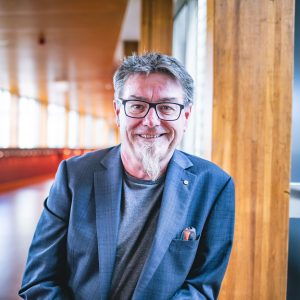 Professor Gordon Wallace is involved in the discovery of new materials, as well as innovative fabrication, and characterization methods. He is committed to the use of fundamental breakthroughs to drive new technologies in Energy and Health.
Professor Gordon Wallace is involved in the discovery of new materials, as well as innovative fabrication, and characterization methods. He is committed to the use of fundamental breakthroughs to drive new technologies in Energy and Health.
He was appointed as an Officer of the Order of Australia and named NSW Scientist of the Year in 2017. He received the Eureka Prize for Leadership in Science and Innovation in 2016. Gordon is a Fellow of the Australian Academy of Science, Australian Academy of Technological Sciences and Engineering and Royal Australian Chemical Institute. He is a corresponding member of the Academy of Science in Bologna.
He has published in excess of 1,100 refereed publications (64,000 citations and an H-index of 110). He is listed as a co-inventor on more than 60 patents and has supervised more than 100 PhD students to completion.
He is currently Executive Director ACES, Director IPRI, ANFF Materials and TRICEP.
Professor Fiona Wood, University of Western Australia
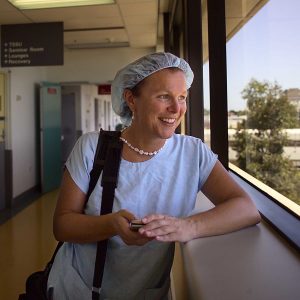 Winthrop Professor Fiona Wood is a Plastic & Reconstructive Surgeon specialising in the field of burn care, trauma and scar reconstruction. As Director of the WA Burns Service of Western Australia she is consultant at Perth Children’s Hospital and Fiona Stanley Hospital. As director of burns research, she leads an interdisciplinary team with broad collaboration focused on translation to improve clinical outcomes. She has been the recipient of the 2003 Australian Medical Association ‘Contribution to Medicine’ Award and an Order of Australia Medal for work with Bali bombing victims. As a National Living Treasure and Australian Citizen of the Year in 2004. she received the honour of being named Australian of the Year in 2005. Fiona and Marie Stoner, co-founders of Clinical Cell Culture, now Avitamedical, won the 2005 Clunies Ross Award for their contributions to Medical Science in Australia
Winthrop Professor Fiona Wood is a Plastic & Reconstructive Surgeon specialising in the field of burn care, trauma and scar reconstruction. As Director of the WA Burns Service of Western Australia she is consultant at Perth Children’s Hospital and Fiona Stanley Hospital. As director of burns research, she leads an interdisciplinary team with broad collaboration focused on translation to improve clinical outcomes. She has been the recipient of the 2003 Australian Medical Association ‘Contribution to Medicine’ Award and an Order of Australia Medal for work with Bali bombing victims. As a National Living Treasure and Australian Citizen of the Year in 2004. she received the honour of being named Australian of the Year in 2005. Fiona and Marie Stoner, co-founders of Clinical Cell Culture, now Avitamedical, won the 2005 Clunies Ross Award for their contributions to Medical Science in Australia
